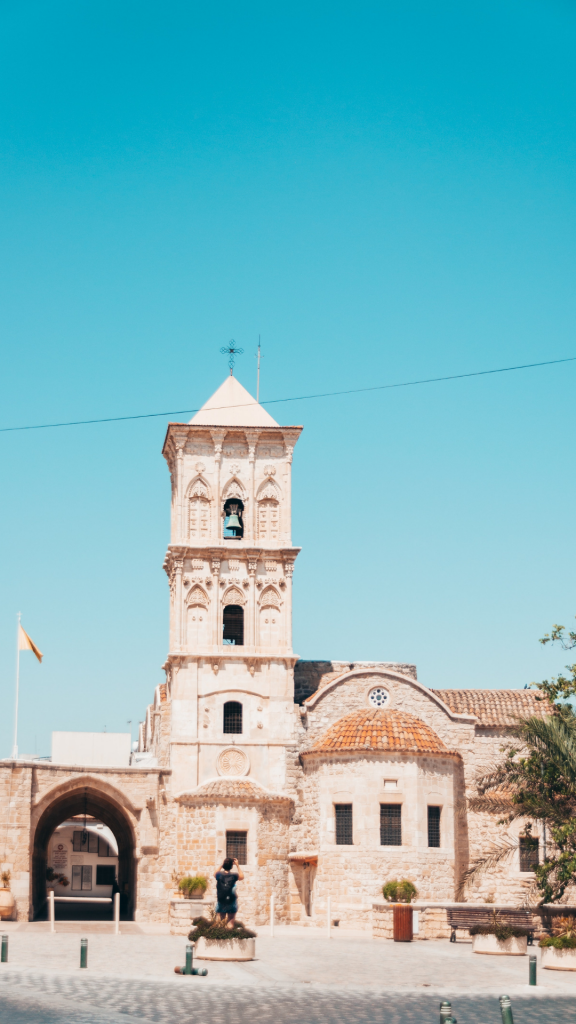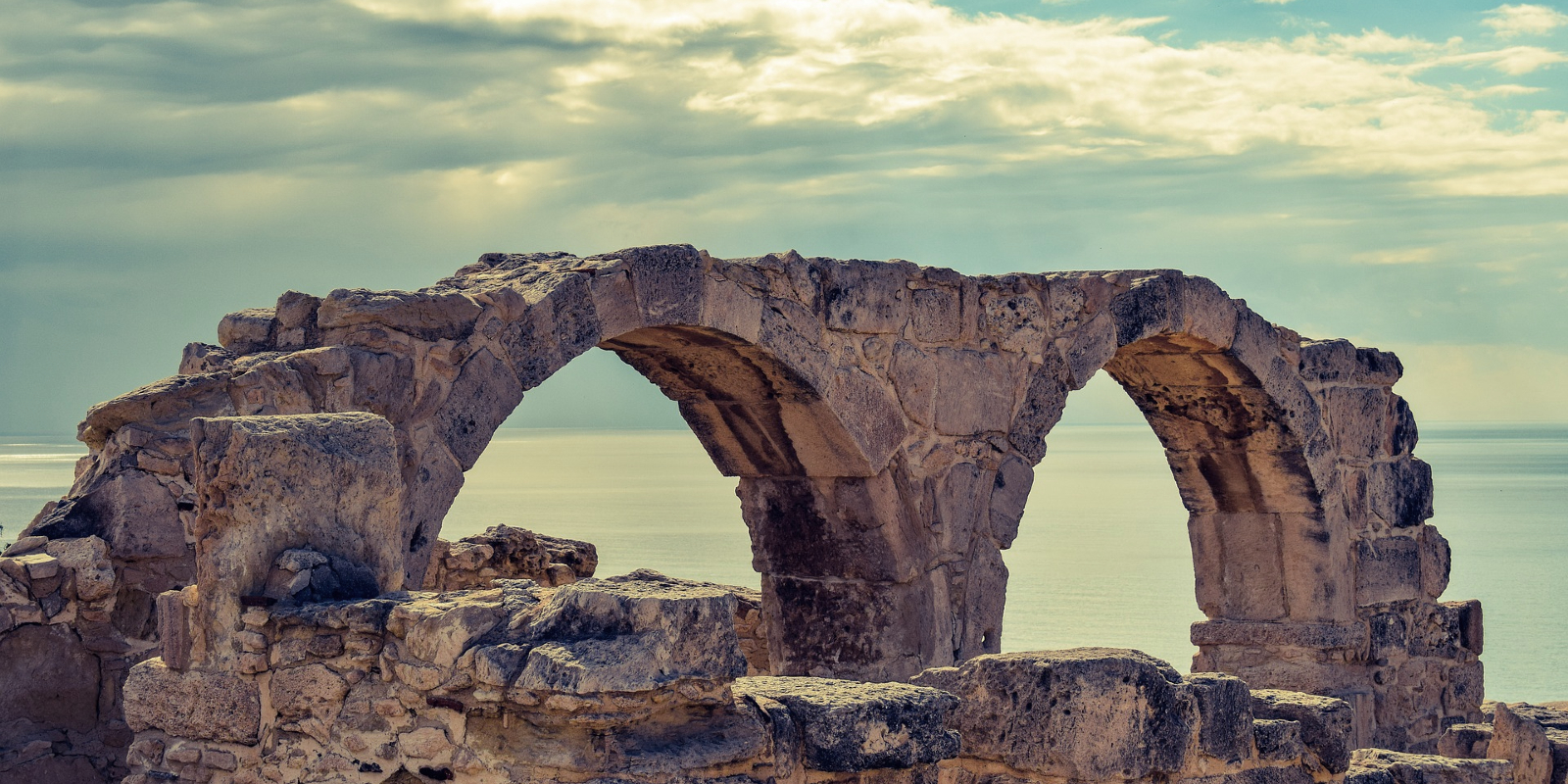Cyprus Travel Guide: Everything You Need to Know Before You Go.
From halloumi to Aphrodite the Goddess of Love. We’re here to tell you all about Cyprus in this travel guide, and why you should add it to your travel list.

This Cyprus Travel guide is here to tell you all about Cyprus, places you should visit and food you should try while you’re there. We want to show you why this beautiful island is one of our fave European destinations and we just know, that you’re going to love it just as much as we do!
Cyprus at a glance

- Best Time of Year to Visit: May – October
- Capital: Nicosia
- Population: 875,899
- Currency: Euro
- Main Language: Greek & Turkish
- Flight time: 4.5 hours.
- Time Difference: GMT+2 hours
About Cyprus
Cyprus is renowned for it’s beautiful beaches, amazing weather all year round, averaging around 320 days of sunshine a year, it’s wine, food, and wealth of history. History dating back to prehistoric times, so the island really doesn’t fall short on ancient ruins and archaeology.
Located off the coast of Turkey in the Mediterranean Sea, Cyprus is actually a divided island. The Turkish Republic is in Northern Cyprus which tends to be the quieter side of the island. Everywhere else is the Greek part, known as the Republic of Cyprus.
Cyprus, a.k.a the island of love, is naturally beautiful and if we combine that with it’s rich history then you’ve got the perfect destination to explore.
Make sure you taste some real halloumi cheese, too. If you’ve never eaten it in Cyprus, then you haven’t really tried halloumi, at all.

History
Calling all history buffs! Cyprus has one of the oldest histories in the world. The island is between three continents; Europe, Asia and Africa so whilst it had huge economic value, it’s also been blessed with incredible natural beauty. A fitting birth place for a mythological Goddess of Love – Aphrodite, of course.
Cyprus is known as the original island of love and even though there’s no solid evidence (or evidence of any kind, really) that Aphrodite really did emerge from the foamy waves and an open clam shell in Paphos, there are rock formations and markings which tell the romantic tale of Aphrodite all across Cyprus. We’re not sure this “romantic” tale, is the stereotypical kind of romance, though.
You can swim around Aphrodite’s rock also known as “Petra tou Romiou“, meaning ‘Rock of the Roman’. Legend has it that by swimming around the rock three times that you will be blessed with eternal youth and beauty. If that isn’t enough to convince you to go to Cyprus, we don’t know what is.
The rock is in one of the most stunning and romantic places in Cyprus, obviously. The beach is a popular tourist spot and the legend of romance really is in the air as the area is especially popular for wedding proposals.
Where should I visit?
Remember when we mentioned the island is mega-rich with history? Well if that’s your bag then you’re in the right place. Cyprus is full of ancient ruins, castles, museums and archaeological sites.
Other than visiting Aphrodite’s Rock and swimming around it three times, there is plenty of other places to explore all across the island.
Tombs of the Kings
Visitors from far and wide make the journey to one of the most amazing archaeological sites on the island. The Tombs of the Kings will surely awaken your sense of adventure.
Awarded a World Heritage site, it’s just over a mile from north Paphos harbour and there you will find an incredible underground monument carved from solid rocks. Some dating back to the 4th Century BC.
Understandably, you’d think from the name that Kings, Queens and members of the Royal family were buried here, but you’d be wrong. Don’t worry, we were wrong, too! It’s actually high officials who were laid to rest in the Tombs.
The name took it’s inspiration from the size and grandeur qualities of the Tombs. The shapes of the Tombs are carefully and meticulously carved into the rock which have truly stood the test of time.
A real exploration into the history of Cyprus, well worth a visit!
Nissi Beach
This wouldn’t be a Cyprus travel guide without talking about Nissi Beach. Now, if you’re wanting to visit arguably one of the most beautiful beaches in Europe, but you’re also looking for a bit more of a lively atmosphere then hire a car, take a bus or taxi and get yourself to Nissi Beach.
If you’ve done even the smallest bit of research into Cyprus, then we’re sure you would have come across mentions of Nissi Beach. It’s a famous sandy beach on the edge of Ayia Napa.

The golden sand stretches out for 500 meters and the waters are crystal clear.
Want to get in the sea but not a strong swimmer? No problem! The amazing thing about this beach is that the waters are shallow, meaning that the water level will never go past your waist. Perfect for visiting the Because of the shallow waters, you can visit the offshore islet, too! What are you waiting for? Take a dip!
Tip: Beach parties are hosted every week in the summer. Great, if that’s what you’re after. If you’re not, head to Cyprus in the autumn/winter months when the party season is over and Ayia Napa is quieter.
This is just a couple of things you can do in Cyprus, there are loads of ancient sites, loads of beaches and lots of hidden gems that you can discover. These are just two of our faves that we think you should try to visit if you get the chance!
Food & Drink
Picture your idea of traditional Mediterranean food. Chances are it will look like the classic dishes you’ll be served in Cyprus. Lots of fresh veg, fresh fish and dips to accompany.
Dining in taverna-style restaurants, the atmosphere is relaxed, welcoming and you’re guaranteed to be able to try some traditional Cypriot dishes. Some of the faves on the island include souvlaki (skewered meat), halloumi (squeaky cheese), calamari, and Koupepia (rice, meat and herbs cooked in a tomato sauce, wrapped in grape leaves).
Halloumi
[huh·loo·mee]
Remember when we told you that if you’ve never eaten halloumi in Cyprus, then you’ve probably never really eaten halloumi at all? Well here’s why;
In Cyprus halloumi isn’t just a cheese, it’s an economic lifeline, contributing approx. £160m to the country’s economy, every year. Not only that but it’s a source of national pride. So much so, that the government of Cyprus had to register for a Protected Designation of Origin (PDO). Much like France with Champagne. They wanted to be able to dictate the exact recipe of making a true halloumi, using the correct balance of sheep, goat and cow milk.
It remains to be some of the best halloumi around. Served raw, grilled or fried, this versatile cheese is often slightly flavoured with fresh mint and is pretty much served with everything.
Wine

If you’re into your wine, then you’ll be interested to know that the Cypriot people have been producing wine on the island for millennia.
It used to be a major factor in the day-to-day lives and evidence even suggests that winemaking was apparent on the island 6000 years ago! It’s best known for the Commandaria wine, once referred to as ‘legendary’ by Forbes. Grapes are picked when they’re ripe, even over ripened, meaning the sugar content is high. High sugar means a richer taste, they’re sweet and have caramel aromas, too. You’ll enjoy this after dinner, with a chocolate dessert or just whenever you need a little zap of energy!
Souvlaki
[soo·vlah·kee]

We’ve covered halloumi and wine, which as much as you might want it to, will not keep you going for the duration of your trip. Plus, there’s so much more you need to try. Put ‘souvlaki’ at the top of your ‘to try’ list… What’s that? You don’t have one? Well, what are you waiting for, make one!
Essentially, a ‘souvlaki’ is a kebab. But not like the kind you’d get from your takeaway when you’ve had a few too many. THIS magnificent creation is a traditional Cypriot delicacy! Chunks of charcoal-grilled skewered meat and heaps of fresh salad piled into a thin pitta bread pocket. Vegetarian options are available and obviously, you can expect to see some halloumi thrown in, too.
Learn the Language
Okay okay, so we’re not expecting you to become a bi-lingual wizard before you jet off to Cyprus but it won’t hurt to learn a few words before you go. This is a Cyprus Travel Guide, after all!
It’s not the easiest language as there are Turkish & Greek speakers on the island, but these few basic phrases and words should help you get by while you’re there.
| English | Translation | Pronunciation |
| Hello/Goodbye | Ya | Yah |
| Yes | Naí | Neh |
| No | Oci | O-hee |
| Good Morning | Kaliméra | Kali-mera |
| Good Night | Kalinychta | Kali-neek-ta |
| Please | Parakaloúme | Pa-ra-kalo |
| Thank you | Efcharistó | Ef-hari-sto |
| How are you? | Pós eísai? | Pos e-say |
What’s next?
Now you’ve read our Cyprus Travel Guide and learnt some basic phrases for your Cyprus Escape, it’s time to see how easy it is to get there, given the current climate.
You might be surprised to learn that the restrictions are fairly lax. Cyprus really is the perfect destination for some long awaited summer sun.
Click the big orange button below to read more about the entry requirements into Cyprus. Enjoy!






